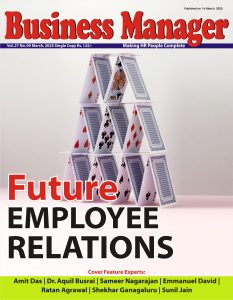The Covid-19 pandemic has caused a grave disruption in the workforce worldwide. Across industries, the attrition rate has jumped onto a new high. To everyone’s surprise, employees are readily bidding adieu to their jobs, while many of them plan to quit in the near future. A recent survey conducted by Microsoft reveals that globally, 41% of employees are actually considering quitting their current jobs. Needless to say, this great rush towards the exit doors has been disturbing the organizations tremendously. Importantly, the trend is being led by the rapidly changing employee expectations, the trigger being any of the following: financial, personal, safety concerns, a shift in priorities, diverse career or learning opportunities, deterioration of mental health, etc.
The Great Resignation, as it has been rightly referred to, has clearly put the HR professionals in a tight situation, as they now struggle to find new ways and means to manage and retain their existing talent. In addition, the outflow of skilled and talented resources is leading to a severe manpower shortage across organizations, and the pressure of filling the vacant positions seems to be taking a toll on the HR leaders.
Now, to effectively tackle this rising employment chaos, it is important for organizations to change their gears towards effective employee management. However, the million-dollar question arises – what HR strategies must one adopt in order to effectively combat the Great Resignation?
The answer lies in following the 3Rs – Realign, Reconnect and Redeploy.
Realign – Driving realignment is key. Help your employees align their individual values and goals with those of the company. Employees have now increasingly begun to seek purpose, meaning and fulfilment in their jobs. This is in stark contrast with the pre-pandemic times when monthly paychecks were enough to give a sense of satisfaction and pay the bills. Now, organizations must strive to realign their employment practices and create different opportunities for their workforce for achieving fulfilment in their work. New, innovative ways to boost employee engagement and foster learning must be readily adopted.
The task for the CHRO is to have a smart retention strategy in place. The workforce dynamics are shifting, and only those companies who are able to adapt will have the best talent by their side.
Reconnect – This essentially means reconnecting or engaging with your workforce on a deeper, personal level. Adding a human touch to your professional relationships gives employees a sense of belongingness. Such strong relationships can contribute greatly to the overall well-being of an organization. To start with, employees must not be viewed merely as workers performing their job duties. Rather, companies must undertake initiatives to understand them as individual human beings. Their needs, circumstances and aspirations must be learnt at an individual level. Based on what employees are actually looking for, companies must strive to create personalized programs which are targeted towards employee growth and development.
Redeploy – Here, the focus is primarily on the skills and their development. HR leaders must keep a track of all the available and required skills at any given point in time. Constant and consistent training should be imparted by using new eLearning methods which can trigger growth journeys. Also, employees could be moved transversally to other desired roles, as per their skill set. According to a report published recently, about 80% of HR professionals said they have formal redeployment programs in place to assist workers in finding new roles internally. It also reveals that about 88% of organizations encourage their team members to take on new roles internally.
Unarguably, a skilled and agile workforce can be the biggest asset for any company, irrespective of its size and type. The recent unusual spike in resignation cases can be effectively controlled by blending and adopting the above mentioned 3 Rs intelligently. The task for the CHRO is to have a smart retention strategy in place. The workforce dynamics are shifting, and only those companies who are able to adapt will have the best talent by their side.
























Add comment